This post may contain affiliate links. Please see our disclosure policy.
Pickled Blueberries are a surprising way to add a unique flavor to meats, cheese plates, and desserts.
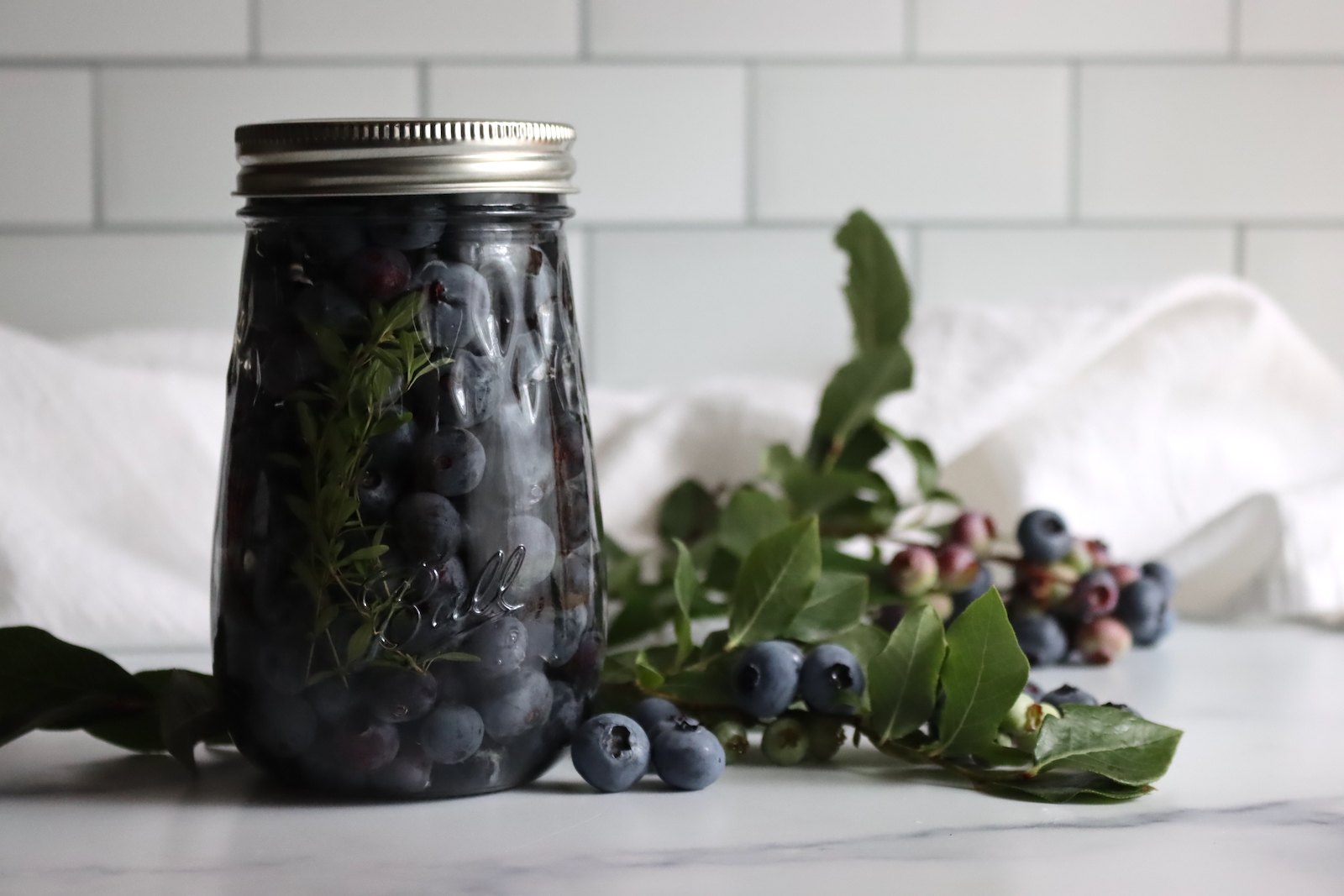
Picture this – you’re hosting a backyard barbecue on a sunny Sunday afternoon. The tantalizing aroma of grilled meats is wafting through the air. Your guests are mingling, having a great time, but there’s something missing. You need that one unique dish to elevate the entire meal.
Enter – pickled blueberries, your new secret weapon.
Curious? You should be. These tangy little gems are not only delicious but also incredibly easy to make.
Whether you’re a seasoned home cook or a newbie looking to try something new and exciting, this guide will walk you through everything you need to know about canning pickled blueberries.
Let’s get started!
Ingredients for Canning Pickled Blueberries
The ingredients for canning pickled blueberries are quite simple. To make one pint, you’ll need the following:
- 1 pint fresh blueberries
- 1 tsp salt
- 3 tbsp white granulated sugar
- 1 cup white balsamic or champagne vinegar
- 3-4 allspice berries
- 1 whole clove
- 1 sprig of thyme
Although the recipe above only yields one pint, you can increase the quantities to fill your canner.
A few notes – first, avoid using white vinegar for this recipe, as it tends to impart too harsh of a flavor on the finished product. Together, the thyme, clove, and allspice berries will give the recipe a warmer flavor, but you can leave these out if you’d rather not include them.
Remember, when you’re selecting your blueberries for this recipe, to check them over for mushy or unripe spots. These won’t yield the best final results.
No blueberries? No problem. You can swap in other berries, like raspberries, barberries, sea buckthorn, loganberries, huckleberries, currants, and more.
Feel free to add in other optional spices, too. A sprig of rosemary can add an aromatic twist, while a broken cinnamon stick will add a warm, spicy flavor. You can add a star anise pod for a hint of liquor or a slice of onion for extra zing.
When I’m making any type of berry canning recipe, I try to harvest the berries right into the jar if possible, which minimizes handling and helps them look nice in the jars.
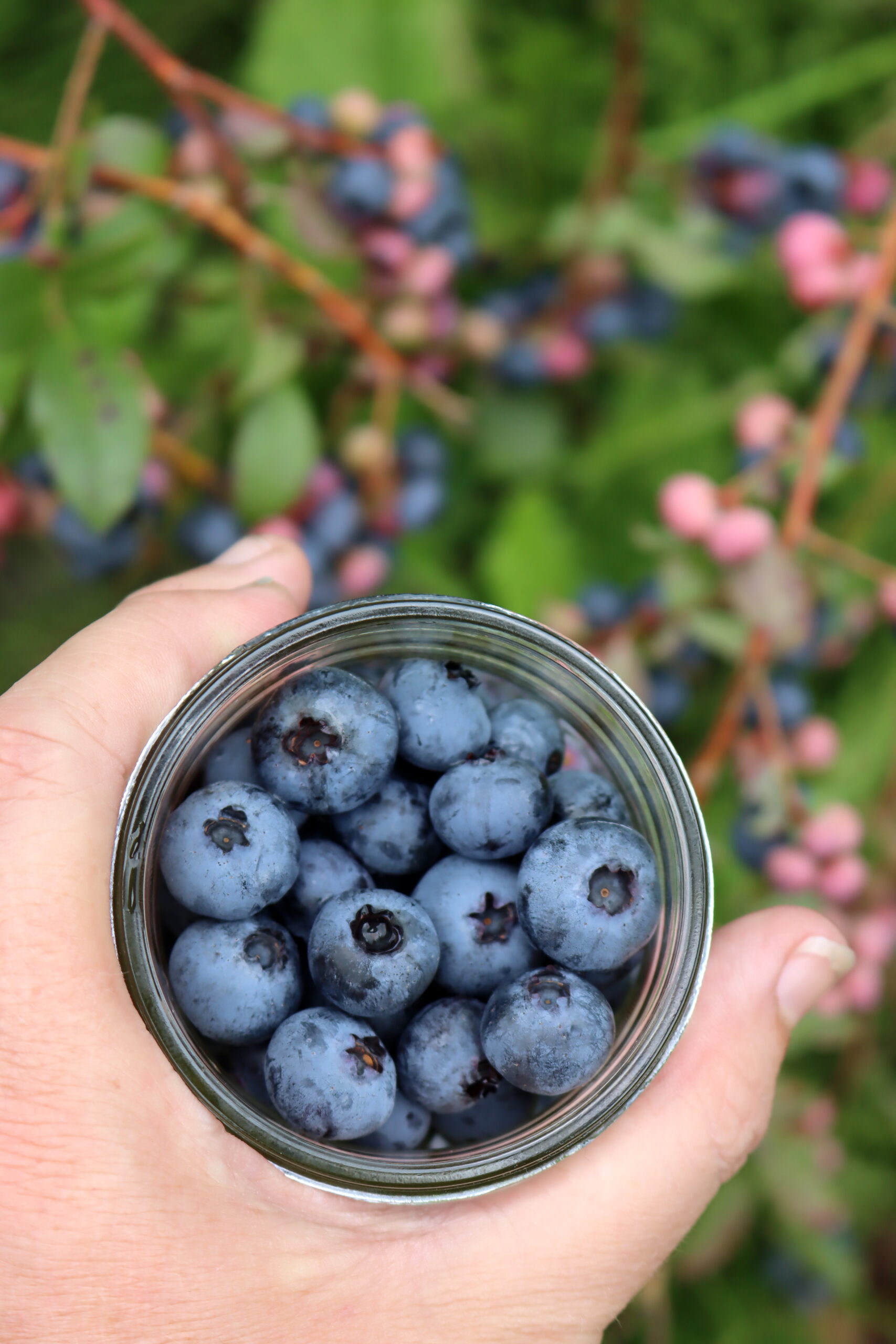
Canning Pickled Blueberries
Canning pickled blueberries may sound complicated, but it’s surprisingly straightforward.
Start by sorting through the blueberries. Pick out any mushy or unripe berries and discard them. Pour the nice, firm blueberries into a pint jar along with any spices you’re using. Wide-mouth jars work best because they’re easier to fill.
Next, you’ll need to make the brine. In a small saucepan, combine the salt, sugar, and vinegar. Bring the mixture to a boil, stirring to dissolve the sugar and salt completely.
Carefully pour the hot brine over the blueberries in the jar, making sure to leave about 1/4 to 1/2 inch of headspace at the top. This is important because it allows room for expansion during the canning process. Wipe the rim of the jar clean and put on the lid.
If you’re planning to store your pickled blueberries in the fridge, you’re done! Just pop the jar in the fridge, and it will keep for a year or more.
However, if you want to keep your pickled blueberries on the shelf, you’ll need to water-bath can the jar or jars. Make sure you use a new lid, and process the jar in a boiling water bath for 10 minutes. If you’re at an altitude above 6,000 feet, increase the processing time to 15 minutes.
Once the canning time has ended, remove the jars and allow them to cool on a clean rag. After 24 hours, check the seals, label, and store the jars.
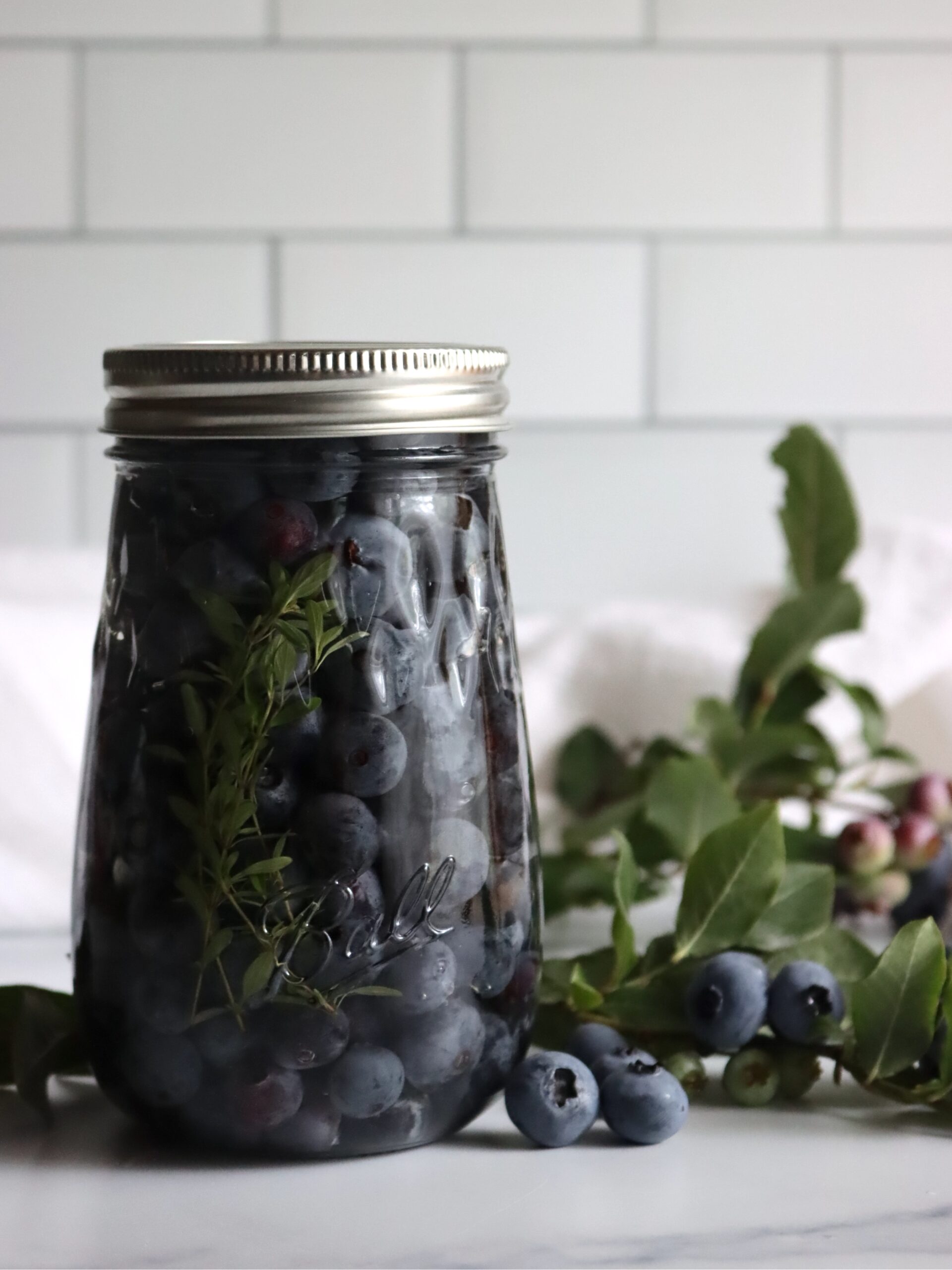
Serving Pickled Blueberries
Now that you’ve mastered the art of canning pickled blueberries, it’s time to enjoy them! These versatile little berries can be used in a variety of ways.
For starters, pickled blueberries make a fantastic addition to any cheese platter. Their tangy flavor pairs beautifully with creamy cheeses like brie or goat cheese. Add some crusty bread and a glass of wine, and you have the perfect appetizer.
Another idea? Spread some goat cheese or cream cheese on a slice of toasted bread and top it with pickled blueberries for a scrumptious and quick snack or breakfast option. Add a drizzle of honey for an extra touch of indulgence.
You can also toss a handful of pickled blueberries into your favorite salad for a burst of flavor. They add a delightful tanginess that complements greens, nuts, and cheeses alike. Try them in a spinach salad with feta and walnuts for a delicious combination.
You can also incorporate pickled blueberries into your cocktails for a creative and flavorful garnish. They can be added to gin and tonics, vodka martinis, or even a classic Old Fashioned to impress your guests with a unique twist.
Don’t forget dessert! Use pickled blueberries to top vanilla ice cream, pound cake, or cheesecake. Their tangy-ness will balance out the sweetness of the desserts, offering a perfectly balanced bite.
Finally, pickled blueberries are a great accompaniment to meats, especially grilled or roasted pork and chicken. Their sweet-tangy flavor acts as a wonderful contrast to the savory meat. Spoon some over your next pork tenderloin, and prepare to be amazed.
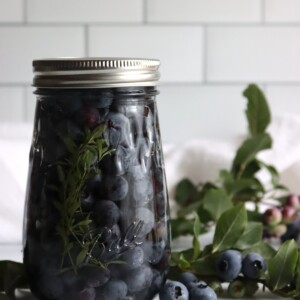
Pickled Blueberries
Equipment
Ingredients
- 1 pint blueberries, fresh, not frozen
- 1 tsp salt
- 3 tbsp sugar
- 1 cup white balsamic , or champagne vinegar
- 3-4 allspice berries
- 1 whole clove
- 1 sprig of thyme
Instructions
- Pick over your blueberries and discard any unripe or spoiled fruit. Remove stems and other debris.
- Pack the blueberries into jars, leaving 1/2 inch headspace. Add the spices directly to the jars (if using).
- Combine vinegar, salt, and sugar in a saucepan and bring to a simmer.
- Pour hot brine over the blueberries and spices in the jars, leaving 1/2 inch headspace.
- Wipe rims, seal with lids, and process in a hot water bath for 10 minutes, adjusting for altitude as needed.
- Remove the jars and cool completely (about 24 hours) before checking the seals, labeling, and storing.
Nutrition
Nutrition information is automatically calculated, so should only be used as an approximation.
Fruit Pickling Recipes
Looking for more sweet and tangy pickling recipes?
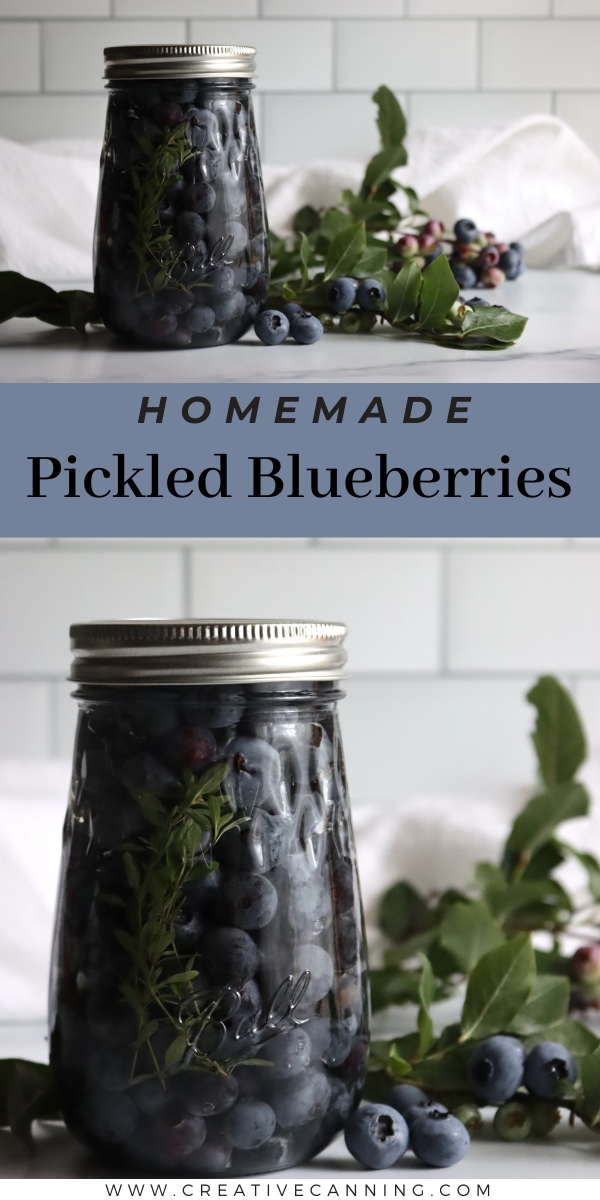
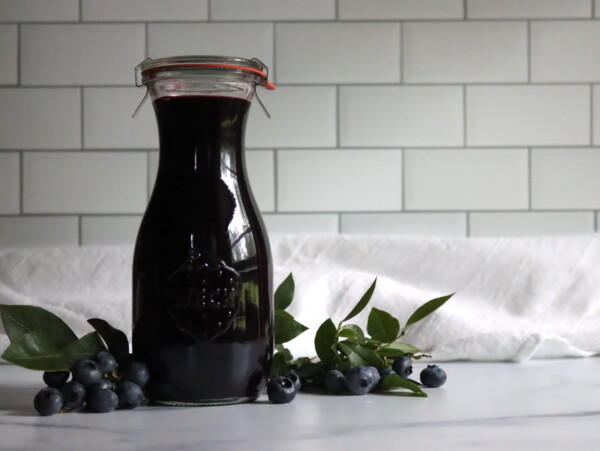
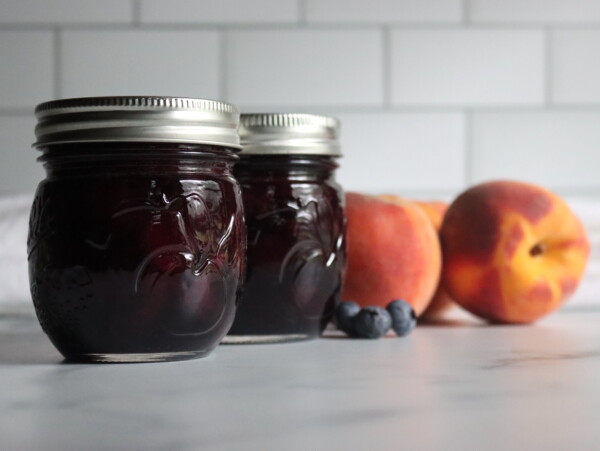
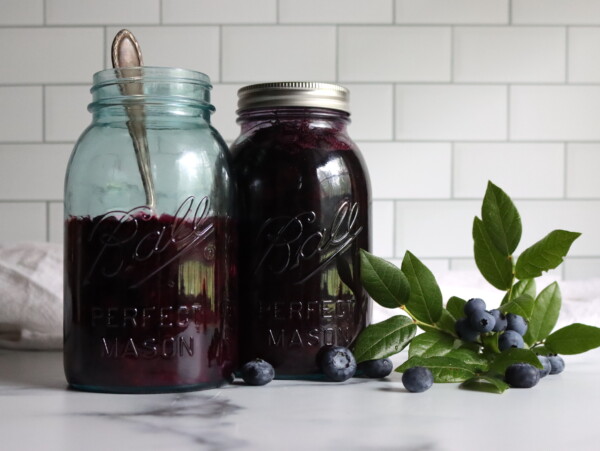
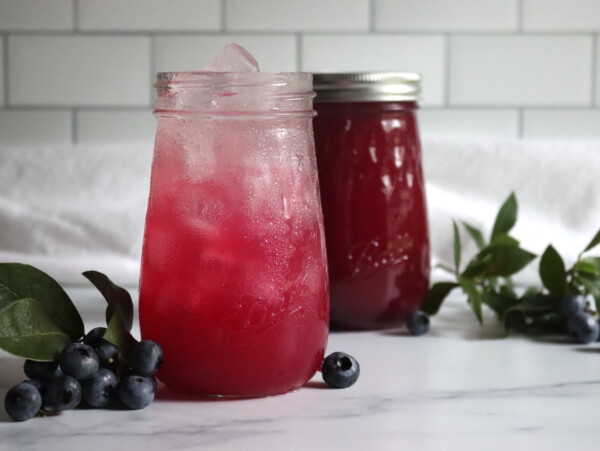
Hi! I see that you have fresh blueberries and not frozen listed. Would it just change the composition of the recipe or do you think it’d be okay?
Frozen berries will probably fall apart quite a bit in canning, and may give you more of a sauce. It’ll still be delicious, but just a different finished texture.
I’m curios as to where you found the shape jar you used in this recipe.
Or what they are called so I can look up on Amazon. Very intrigued to make and taste this!
Thank you!
Dani
These are called “Fluted Glass Jars” and they’re made by Ball Canning. You can find them on Amazon here: https://amzn.to/4oWscDP
I cannot find whole allspice. I have ground but didn’t think that would be the best for pickling. Can you suggest a substitute? I’d like to try the original recipe. Also, have you ever used lemon thyme in this?
Lemon thyme would be lovely. The whole allspice is optional, but it does add good flavor. You can use a pinch of powdered allspice just fine. Alternately, a bit of mace or a piece of a whole nutmeg would work well (but if you can’t fine whole nutmeg, you probably won’t be able to find those either).
Hi, when do I add the spices and thyme?
They’re added right to the jars with the blueberries.
Hi
I am excited to try this – your instructions for the brine say to combine vinegar salt water and sugar but you don’t list water in the ingredients.
Is this a typical brine solution of 1:1 vinegar and water?
Thanks
Oops, that’s a type-o. I actually made this with all vinegar, and with champagne vinegar it comes out lovely (white vinegar is too abrasive). You can also make it with a 1:1 ratio of water to vinegar, and that’s perfectly fine for canning too. I fixed the recipe and removed the note about water. Thanks for catching that!